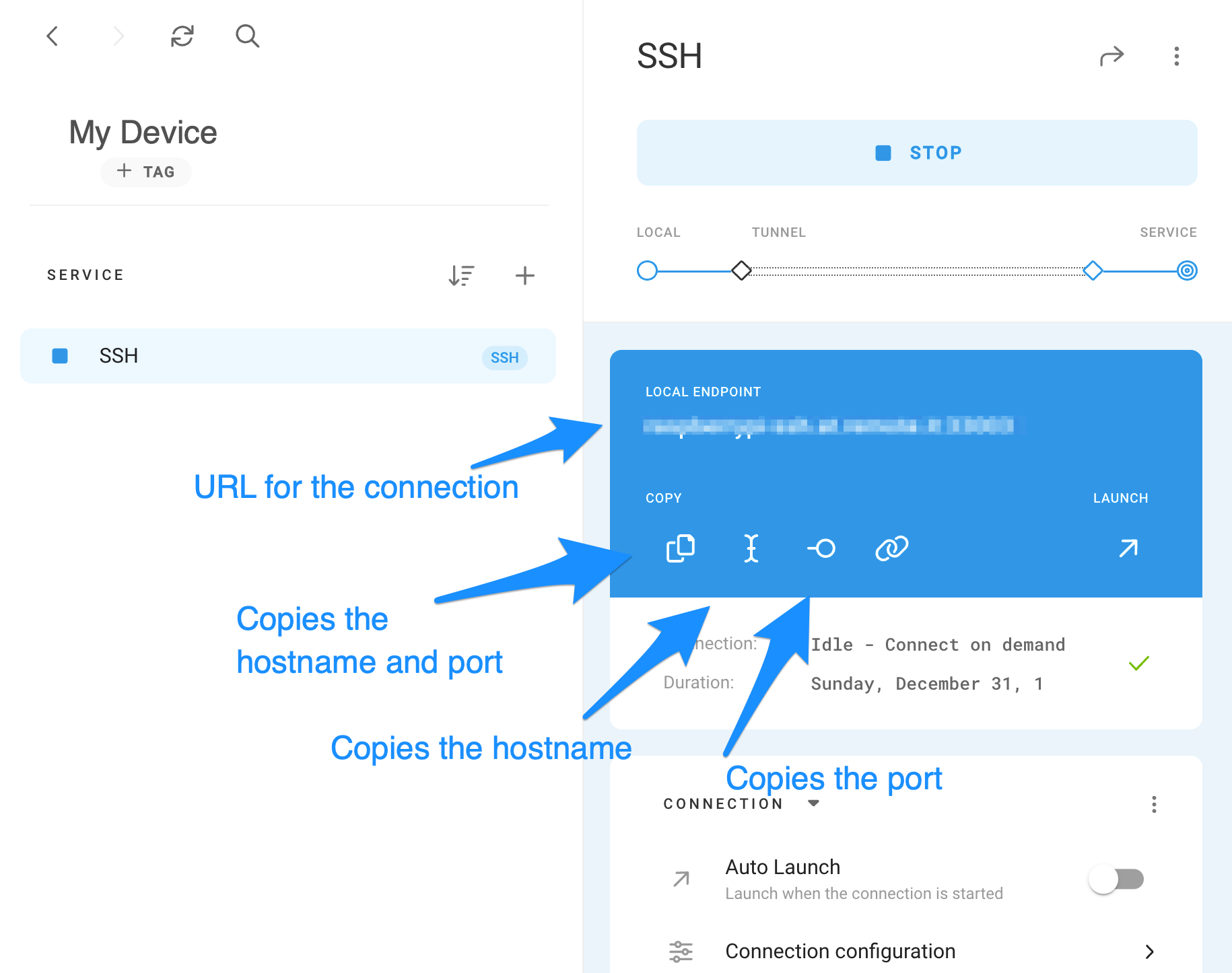Raspberry Pi Remote Access: Your Ultimate Guide
Can you control your Raspberry Pi from across the globe? Absolutely. Mastering remote access is not just a convenience, it's a gateway to unprecedented control and flexibility in your projects.
In an era defined by interconnectedness, the ability to manage devices remotely has become essential. The Raspberry Pi, a remarkably versatile and affordable single-board computer, sits at the forefront of this revolution. This article will guide you through the intricacies of establishing and maintaining secure and efficient remote connections to your Raspberry Pi, transforming the way you interact with your projects. From the fundamental principles to advanced configurations, we will explore the most effective techniques, ensuring you can harness the full potential of your Raspberry Pi, regardless of your physical location.
Here's a detailed look at the key topics covered:
- Introduction to Raspberry Pi Remote Access
- Why Remote Access Matters
- Setting Up SSH for Raspberry Pi
- Connecting via SSH
- Using VNC for Remote Desktop Access
- Securing Your Remote Connection
- Troubleshooting Common Issues
- Advanced Remote Access Methods
- Remote Access with Cloud Services
Understanding Raspberry Pi Remote Access
Remote access allows you to manage and interact with a device from a distance, a capability that unlocks a world of possibilities for Raspberry Pi users. It empowers you to monitor, control, and troubleshoot your projects without the need for physical presence. Whether you're a beginner or an experienced user, the ability to access your Raspberry Pi remotely is a game-changer, greatly increasing both efficiency and convenience. Consider scenarios such as monitoring a home automation system, managing a remote server, or controlling an IoT project located miles away. The advantages are undeniable.
The Raspberry Pi offers several approaches to achieving remote access. These range from simple command-line interfaces to fully-featured graphical user interfaces (GUIs). The variety of methods means that every user, regardless of their technical skill level, can find a suitable solution.
Grasping the Fundamentals
Before delving into the specifics, it's essential to understand the core concepts. This includes a solid understanding of network protocols (like TCP/IP), security considerations, and the basic tools required to establish a connection. A strong foundation in these fundamentals will enable you to troubleshoot effectively and make informed decisions regarding the best remote access strategy for your needs.
The Importance of Remote Access
Remote access for your Raspberry Pi is far more than just a convenient feature; for many applications, it is an absolute necessity. From the realm of home automation to managing servers located in data centers, the capacity to remotely interact with your Raspberry Pi significantly enhances efficiency and adaptability. This allows you to manage projects smoothly, no matter where you are.
Here are some compelling reasons why remote access is crucial:
- Flexibility in Project Management: Monitor and control projects from any location, making it easier to adapt to changes and troubleshoot issues.
- Reduced Physical Dependency: Avoid the necessity of being physically present to perform essential tasks, thereby saving valuable time and effort.
- Enhanced Security: Safeguard your device by controlling access permissions, ensuring only authorized users can interact with your Raspberry Pi.
- Scalability for Large Deployments: Simplify the management of multiple Raspberry Pi devices, especially useful when scaling up operations.
Table
| Method | Description | Pros | Cons | Use Cases |
|---|---|---|---|---|
| SSH (Secure Shell) | A secure, encrypted protocol for command-line access. | Highly secure, low overhead, readily available. | Requires familiarity with command-line interface. | Server management, headless operation, secure file transfer. |
| VNC (Virtual Network Computing) | Provides a graphical desktop environment for remote access. | Intuitive GUI, easy to set up and use. | Higher bandwidth requirements, potential security vulnerabilities if not properly configured. | Graphical application control, remote desktop usage, GUI-based troubleshooting. |
| Cloud Services (e.g., ngrok, Pagekite) | Creates secure tunnels to your Raspberry Pi, bypassing port forwarding. | Easy to set up, simplifies network configuration, often includes encryption. | Can be dependent on third-party services, potential cost implications for advanced features. | Remote access from anywhere, circumventing complex network configurations. |
| Port Forwarding | Configuring your router to direct incoming network traffic to your Raspberry Pi. | Allows access from outside your local network. | Requires knowledge of network configuration, potential security risks if not implemented correctly. | Accessing services hosted on your Raspberry Pi from the internet. |
| Dynamic DNS (DDNS) | Assigns a consistent hostname to your Raspberry Pi, even with a changing IP address. | Simplifies connecting to your Raspberry Pi with a dynamic IP address. | Requires a DDNS service provider. | Accessing your Raspberry Pi from anywhere, even with a dynamic IP address. |
Source: Official Raspberry Pi Documentation
Configuring SSH for Raspberry Pi
SSH, or Secure Shell, is a fundamental tool for remote access on Raspberry Pi. It's a secure and encrypted method for connecting to your device from another computer, ensuring that all data transmitted is protected. Enabling SSH is a relatively straightforward process, achievable in just a few steps.
Enabling SSH on Your Raspberry Pi
Follow these steps to activate SSH on your Raspberry Pi:
- Open the terminal on your Raspberry Pi (or connect via an existing SSH session if you can).
- Type
sudo raspi-configto access the Raspberry Pi Configuration tool. This command requires root privileges, hence the `sudo`. - Navigate to the "Interfacing Options" section using the arrow keys.
- Select "SSH" and enable it by choosing the appropriate option, typically "Yes".
- Restart your Raspberry Pi to apply the changes by typing
sudo rebootin the terminal. This will disconnect any active SSH sessions and restart the Pi.
Connecting to Your Raspberry Pi via SSH
Once SSH has been enabled, the next step is to establish a connection using an SSH client. The choice of client depends on your operating system. Windows users can leverage tools such as PuTTY. For macOS and Linux users, the built-in terminal application provides a convenient and readily available option.
Here's how you can connect:
- Launch your SSH client.
- Enter the IP address of your Raspberry Pi in the appropriate field of your SSH client. You can find your Raspberry Pi's IP address by running
hostname -Iin a terminal on the Pi itself, or by checking your router's connected devices list. - Log in using the username and password that you configured on your Raspberry Pi. This will likely be the default username "pi" and the password you set during the initial setup or any subsequent changes you've made.
Accessing Raspberry Pi Remotely with VNC
If you prefer a graphical user interface, VNC (Virtual Network Computing) offers an excellent solution. VNC enables you to access the desktop environment of your Raspberry Pi remotely, providing a more intuitive and user-friendly experience. This allows you to interact with the Raspberry Pi's GUI, run graphical applications, and perform visual troubleshooting.
Setting Up VNC on Raspberry Pi
Configuring VNC on your Raspberry Pi involves these steps:
- Install the VNC server by running the command
sudo apt-get update && sudo apt-get install realvnc-vnc-server realvnc-vnc-viewerin the terminal. The `apt-get update` command refreshes your package lists. This will install the RealVNC server, a popular and reliable VNC server. - Enable the VNC server via the Raspberry Pi Configuration tool (
sudo raspi-config). Navigate to the "Interfacing Options" and select "VNC", then enable it. - Use a VNC client on your remote device to establish a connection to your Raspberry Pi. You will need the IP address of your Raspberry Pi and the password you set up during the VNC server configuration.
Ensuring the Security of Your Remote Connection
Security is of utmost importance when it comes to remote access. Without proper security measures, your Raspberry Pi could become vulnerable to unauthorized access, potentially compromising both your data and your projects. Implementing strong security practices is vital for protecting your device.
Best Practices for Securing SSH Connections
- Use Strong Authentication Methods: Implement strong passwords or, preferably, use SSH keys for secure authentication. SSH keys are more secure than passwords and prevent brute-force attacks.
- Disable Root Login: Forbid root login through SSH to prevent potential intruders from directly accessing the root account. This adds an extra layer of security.
- Change the Default SSH Port: Modify the default SSH port (port 22) to make it more difficult for attackers to locate your device. Choose a high-numbered port (e.g., above 10000).
- Regular Updates: Keep your Raspberry Pi's operating system and all installed software up to date to promptly address any security vulnerabilities. Regularly update using
sudo apt update && sudo apt upgrade.
Addressing Common Issues in Remote Access
Even with careful setup, challenges can arise when configuring remote access for your Raspberry Pi. Here are some common problems and their solutions:
- Connection Refused: Verify that SSH or VNC is enabled, confirm that you're using the correct IP address for your Raspberry Pi, and that your firewall isn't blocking the connection (if applicable).
- Authentication Failed: Double-check your username and password. Ensure that you're entering the correct credentials. If problems persist, consider regenerating your SSH keys.
- Slow Connection: Optimize your network settings, or consider using a wired connection instead of Wi-Fi for improved performance. This is particularly crucial for VNC, which is more bandwidth-intensive than SSH.
Exploring Advanced Remote Access Techniques
For users looking to expand their Raspberry Pi remote access capabilities, several advanced methods can be explored, providing greater flexibility and control.
Utilizing Port Forwarding
Port forwarding allows you to access your Raspberry Pi from outside your local network. This is particularly useful if you want to connect to your device from anywhere in the world. To do this, you must configure your router to forward traffic on a specific port (e.g., SSH port 22) to the internal IP address of your Raspberry Pi. This requires accessing your router's configuration interface, often by typing its IP address (e.g., 192.168.1.1 or 192.168.0.1) into a web browser.
Implementing Dynamic DNS
Dynamic DNS (DDNS) services solve the problem of a changing IP address. Many internet service providers (ISPs) assign dynamic IP addresses, which can change periodically. DDNS services assign a consistent hostname to your Raspberry Pi, even if its IP address changes. This ensures seamless connectivity without the need to constantly update your IP address manually. You'll need to sign up for a DDNS service and configure it on your Raspberry Pi or your router.
Leveraging Cloud Services for Remote Access
Cloud-based solutions offer an alternative approach to Raspberry Pi remote access, often simplifying the setup process. Platforms like ngrok or Pagekite provide secure tunnels to your device, allowing remote access without the complexity of port forwarding or DDNS. These services act as intermediaries, forwarding traffic to your Raspberry Pi.
Benefits of Cloud-Based Solutions
- Simplified Setup: These services are often easier to configure, especially for users with limited networking knowledge. The setup process typically involves installing a client on your Raspberry Pi and configuring a few settings.
- Enhanced Security: Cloud-based solutions often include encryption to protect your data during transmission, adding an extra layer of security to your connection.
- Convenience: With minimal effort, you can establish remote access from virtually anywhere in the world. As long as your Raspberry Pi has an internet connection and the cloud service is running, you can connect remotely.
- Movie Rules Rules 2024 Kannada A Mustwatch For Film Fans
- Movierulz Kannada Understanding Piracys Impact Future

Raspberry Pi Remote Access PDF Secure Shell Ip Address

Raspberry Pi How to Connect Guide

Remote Access Raspberry Pi Terminal